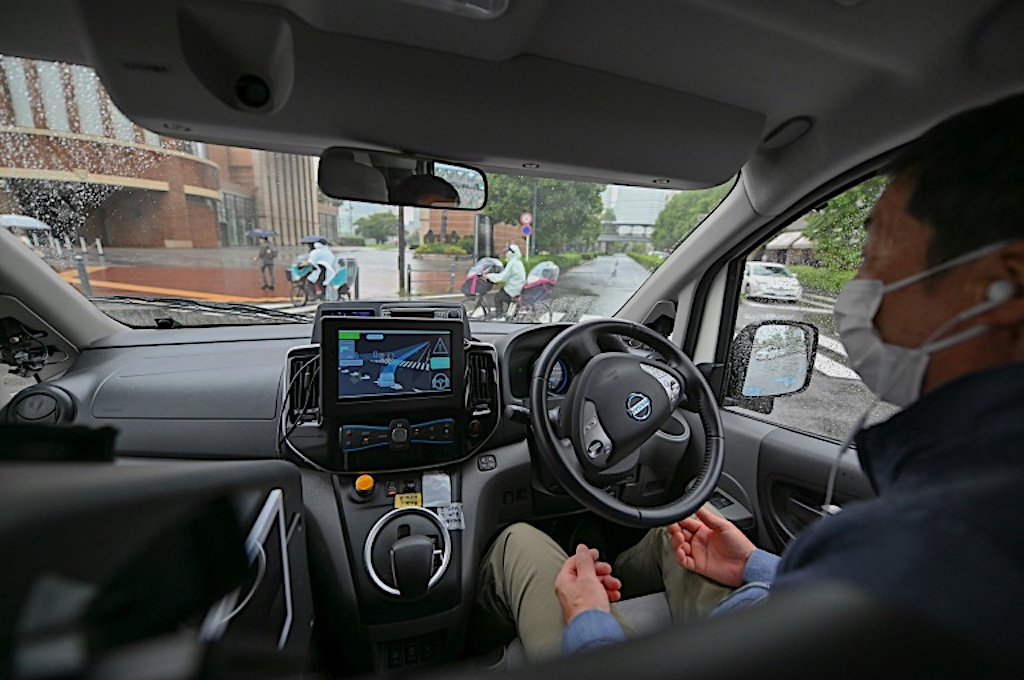Self-driving technology can potentially reduce road traffic accidents. However, the more sophisticated automotive computers become then the greater the risk to autonomous vehicles cyberattacks become.
Such cyberattacks could endanger not only those in the affected vehicle, but those in nearby vehicles and buildings. Road testing to improve security is expensive and time-consuming, but Commonwealth Cyber Initiative (CCI) researchers developed a virtual option: a vast digital library of real-world driving scenarios to help manufacturers craft more secure autonomous vehicles.
A team from the Virginia Tech-affiliated company Global Center for Automotive Performance Simulation (GCAPS) is working with researchers at the Virginia Tech Transportation Institute (VTTI) to validate the security and performance of automated technologies virtually. Their project is supported by the Innovation: Ideation to Commercialization program from the Commonwealth Cyber Initiative in Southwest Virginia, which provides funds to commercialize technology generated from research at the intersection of data, security, and autonomy.
Virtual, scenario-based testing is a safe, cost-effective alternative to the traditional distance-based validation of autonomous technology, which requires the onerous and sometimes impossible task of driving billions of miles on public roads.
Looking into these issues is Miguel Perez, associate professor of biomedical engineering and mechanics who leads the VTTI data engineering programme.
Perez explains in correspondence to Digital Journal: “The library establishes ground truth based on real-world data for vehicle interactions with the road, the infrastructure, vulnerable road users, and other vehicles,” said Miguel Perez, associate professor of biomedical engineering and mechanics who leads the VTTI data engineering program.”
Reams of real data
According to Perez , in order “To construct a highly reliable virtual training library, the research team is leveraging a unique resource: the massive treasure trove of real-world recorded events in VTTI’s naturalistic driving databases.”
He explains further on his company’s innovations: “For more than 30 years, VTTI has been collecting data from cameras and sensors unobtrusively installed (with permission) in regular cars belonging to regular people all over the country. The data — which includes basic vehicle dynamics, video, and sensor information — represents over 70 million miles of real-world driving behaviours exhibited during normal daily commutes, culminating in over 10 petabytes so far.”
With recent innovations at his firm, Perez observes: “Over the past five years, GCAPS has worked with VTTI to apply the data to automated driving technology. The team has been developing an algorithm to classify a vehicle’s lateral and longitudinal micro movements by assigning objective values to the displacement of a vehicle at certain rates and distances. Once an event has been classified, it can then be recreated: converted into a simulation-ready dataset that includes trajectories, positions, road features, and terrain.”
The researchers have been exploring questions like how close do people really drive to each other? Does a person’s age affect their reaction? Would a person in a different region react differently?
In the event of a cyber attack
With the cybersecurity focus, the question set has expanded to include what might happen with vehicle performance in the event of a cyberattack? How will a vehicle compensate for a spoofed sensor? Will the autonomous vehicle be safe on the road if it’s actively being hacked?
In answering these, Perez states: “Because the interactions in the events represent real-world data, the accuracy and timing of the interactions provide a highly valid foundation,” said Perez. “As such, the library enables the determination of cybersecurity risk severity associated with vehicles, but in a safe and repeatable way through simulation.”
This capability will help engineers determine the requirements for cybersecurity products on automated vehicles, such as the required response lag times to minimize vehicle issues, or the percentage of computing resources that can be safely reassigned to defend a hacked network.














